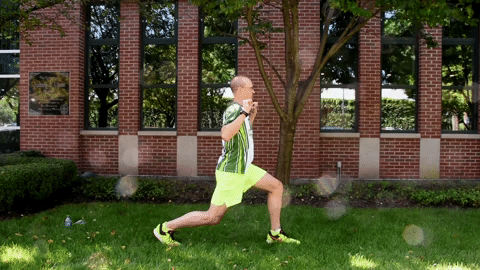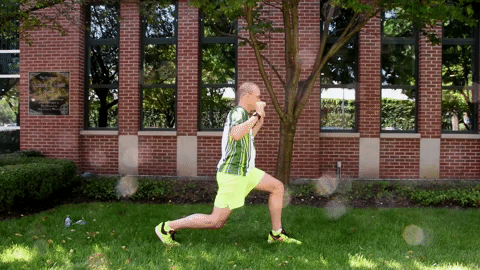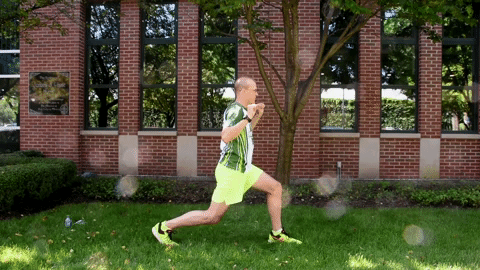Global Running Day Marks Start of Marathon Season at Mercy Home
A little rain didn’t stop our Mercy Home Heroes from celebrating Global Running Day and the start of the 2025...
June 26, 2025
September 27, 2018
The starting line is in sight and Bank of America Chicago Marathon runners are on the home stretch of their training programs. We are blessed to have another group of dedicated Mercy Home Heroes this year who will be running on behalf of our kids to ensure they have all the resources they need. Whether you’re a first-time marathon runner or a seasoned veteran, we want you to have all the necessary tools in your box when the big day arrives.
Mercy Home for Boys & Girls’ Endurance Program Coordinator Jim Harding knows a thing or two about running a marathon – he has run 26 of them. Jim has done the Chicago Marathon 12 times and has a good handle on what to expect. As runners put the final touches on their training and preparation, we sat down with Jim for some advice from his years of experience.
JH: Definitely respect the taper. I know a lot of people make it to that point and think, “I just got to get one more good run in, or one more long run; because I kind of missed one or I missed out on some training.” But at this point, when you’re a week out, you should really be focusing on just doing that taper. What most people say is 25% of the mileage of your biggest week. If you’re at 40 miles, then you’re really only at 10 miles that week before.
Jim’s Pro Tip: Four on Tuesday, Four on Thursday, a couple of miles Saturday morning – then you’ll be ready to go.
JH: Most people probably have heard that you’re supposed to carb load before a marathon, and most people think that just means the night before. Really, it’s a process of doing it throughout that week; just kind of building up to it. I don’t suggest a big meal on the night before. … It’s a weeklong process to carb load.
JH: A lot of people I know go with a peanut butter sandwich, or toast with peanut butter and banana. Some people just like a bar. … I think it’s whatever works for you. If there’s some stuff you’ve been doing along the way — stick with that. Like they always say, “nothing new the week of the race.” So don’t try something just because you read that sweet potatoes are great if you haven’t been eating sweet potatoes. … I would say just experiment with things leading up to the race; know what carbs are good for you. You can also get carbs from vegetables and things like that too, fruits, so it’s not just the traditional pasta and bread that we all think about.
Jim’s Pro Tip: I would say the mistake that marathoners make is not eating – they worry that they’re going to have their stomach upset if they eat something, but it’s super important. … You have to experiment and find out what works, but definitely eat.
JH: One of the things that I do suggest is that you check out the Youtube page of React Physical Therapy, they are our official partner. They have a lot of dynamic exercises — so this is what I really suggest before going out for a run, especially on marathon morning. Rather than static stretching or even running any miles, you don’t really need to run to get ready that morning. So it’s dynamic stretching, which would be things like squats or lunges — things where you’re actually moving the body and warming up some of the bigger muscles of the body.
Jim’s Pro Tip: They (React Physical Therapy) have a four-way lunge — at the very least I always do that before every run I go on. So I would find those types of things.
Jim Demonstrates the four-way lunge




JH: You have to be super cautious to go out easy at the beginning. … The crowds are amazing at the beginning, and so people get caught up in getting out there fast – you feel trapped, there’s 40,000 people running, then people have the tendency to want to weave in and out – I say don’t do that. If you wouldn’t do that on a normal run, why would you do that on race day? Just be patient, stay in the moment, just stay relaxed.
Jim’s Pro Tip: I really suggest running with a pacer if you’re pretty confident in what type of pace you want to run. The marathon has about 100 people who run as pacers — seek them out. You can find them at the expo, you can sign up to run with the pace team — I would definitely suggest that. Let them do that work for you, [you] don’t have to keep looking at your watch and being worried about that. Just run with them, enjoy the crowds, really pay attention to the signs, the people out there, high five the little kids that come out, all that kind of stuff. So really just make sure you’re enjoying the moment.
JH: I would say the thing you’re probably going to notice more than anything is that you’re going to hope that you don’t have to walk a lot of stairs. You’ll find the quads really get beat up during a marathon, so stairs are going to be your biggest enemy. … Definitely hydrating throughout the race is important — that actually helps with that recovery process. … You want to try to get a mix of protein and carbs into your body as soon as you can after the race, [like] some kind of protein shake, I prefer that myself because I usually don’t feel like eating right when I get done.
Jim’s Pro Tip: Continue to hydrate and continue to get that good mix of carbs and protein every single meal you eat after for the next few days.
A little rain didn’t stop our Mercy Home Heroes from celebrating Global Running Day and the start of the 2025...
June 26, 2025
Our Mercy Home Heroes kicked off the 2024 running season on Global Running Day in June with an informal 5K...
June 18, 2024
Last month, 40,000 athletes took to the streets in the 2023 Bank of America Chicago Marathon. Among them were 365...
November 6, 2023
Comments